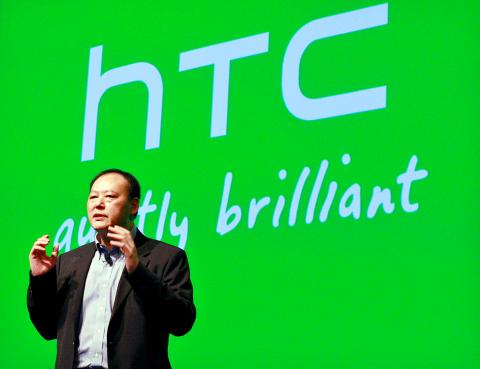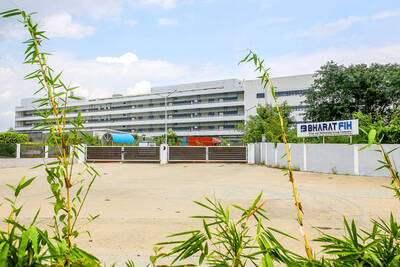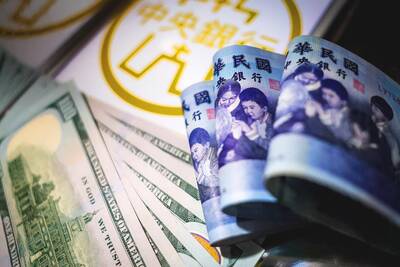Finnish handset maker Nokia Oyj will have a better chance than Taiwan-based HTC Corp (宏達電) of succeeding in China’s Windows Phone 8 (WP8) market thanks to its better product portfolio, research firm Gartner Inc said recently.
Although HTC is expanding its retail presence and is improving its relationships with Chinese carriers, Nokia’s partnership with Microsoft Corp will give it an edge in selling WP8 phones, said Roger Sheng, a Shanghai-based research analyst at Gartner.
“It’s not just about the number of distribution channels but also the product portfolio,” Sheng told reporters.

Photo: Reuters
Since Nokia has bet on the Windows software to revive its sales, the company will definitely launch new models covering the full pricing spectrum, from entry-level models costing US$150 to high-end phones priced at US$600, Sheng said.
“HTC still focuses on the Android system rather than Windows, indicating that it has devoted less manpower to the Windows platform and will have a weaker product portfolio than Nokia,” he added.
Moreover, Nokia is expected to receive subsidies from Microsoft for its WP8 marketing expenses and royalty payment obligations, while HTC still needs to pay Microsoft royalties, Sheng said.
Once the largest mobile phone makers in China, Nokia is also expected to promote its new Windows models in China more effectively than HTC, given the Finnish maker’s solid relationships with distributors and telecoms operators, the analyst said.
Nokia, which announced in February last year a broad strategic partnership with Microsoft, launched its WP8-based Lumia 920 on Sept. 7, with emphasis on its powerful “PureView” camera and built-in wireless charging. HTC also unveiled its first WP8 smartphones — the 4.3-inch HTC 8X and the 4-inch HTC 8S — in New York on Sept. 19.
The phones feature Beats audio technology and improved camera capabilities. In addition to its battle with Nokia, HTC is facing increasingly intense competition from Chinese handset makers using Google Inc’s Android operating system.
HTC is expected to remain the sixth-largest Android maker in China by taking an 8 percent market share this year, the same share it grabbed last year, according to data compiled by the Taipei-based Topology Research Institute (拓璞產業研究所).
China’s Lenovo Group (聯想) and Huawei Technologies Co (華為) will each account for 14 percent of total Android phone shipments this year, behind Samsung’s 24 percent, the institute said.
Last year, Lenovo held only a 5 percent share of Android phone shipments in China.
Chinese brand Coolpad (酷派) will likely rank fourth and see its Android market share rise from 9 percent last year to 13 percent this year, while fifth-placed ZTE Corp (中興) of China will expand from 10 percent to 11 percent, the institute predicted.

SETBACK: Apple’s India iPhone push has been disrupted after Foxconn recalled hundreds of Chinese engineers, amid Beijing’s attempts to curb tech transfers Apple Inc assembly partner Hon Hai Precision Industry Co (鴻海精密), also known internationally as Foxconn Technology Group (富士康科技集團), has recalled about 300 Chinese engineers from a factory in India, the latest setback for the iPhone maker’s push to rapidly expand in the country. The extraction of Chinese workers from the factory of Yuzhan Technology (India) Private Ltd, a Hon Hai component unit, in southern Tamil Nadu state, is the second such move in a few months. The company has started flying in Taiwanese engineers to replace staff leaving, people familiar with the matter said, asking not to be named, as the

The prices of gasoline and diesel at domestic fuel stations are to rise NT$0.1 and NT$0.4 per liter this week respectively, after international crude oil prices rose last week, CPC Corp, Taiwan (台灣中油) and Formosa Petrochemical Corp (台塑石化) announced yesterday. Effective today, gasoline prices at CPC and Formosa stations are to rise to NT$27.3, NT$28.8 and NT$30.8 per liter for 92, 95 and 98-octane unleaded gasoline respectively, the companies said in separate statements. The price of premium diesel is to rise to NT$26.2 per liter at CPC stations and NT$26 at Formosa pumps, they said. The announcements came after international crude oil prices

DOLLAR SIGNS: The central bank rejected claims that the NT dollar had appreciated 10 percentage points more than the yen or the won against the greenback The New Taiwan dollar yesterday fell for a sixth day to its weakest level in three months, driven by equity-related outflows and reactions to an economics official’s exchange rate remarks. The NT dollar slid NT$0.197, or 0.65 percent, to close at NT$30.505 per US dollar, central bank data showed. The local currency has depreciated 1.97 percent so far this month, ranking as the weakest performer among Asian currencies. Dealers attributed the retreat to foreign investors wiring capital gains and dividends abroad after taking profit in local shares. They also pointed to reports that Washington might consider taking equity stakes in chipmakers, including Taiwan Semiconductor

A German company is putting used electric vehicle batteries to new use by stacking them into fridge-size units that homes and businesses can use to store their excess solar and wind energy. This week, the company Voltfang — which means “catching volts” — opened its first industrial site in Aachen, Germany, near the Belgian and Dutch borders. With about 100 staff, Voltfang says it is the biggest facility of its kind in Europe in the budding sector of refurbishing lithium-ion batteries. Its CEO David Oudsandji hopes it would help Europe’s biggest economy ween itself off fossil fuels and increasingly rely on climate-friendly renewables. While